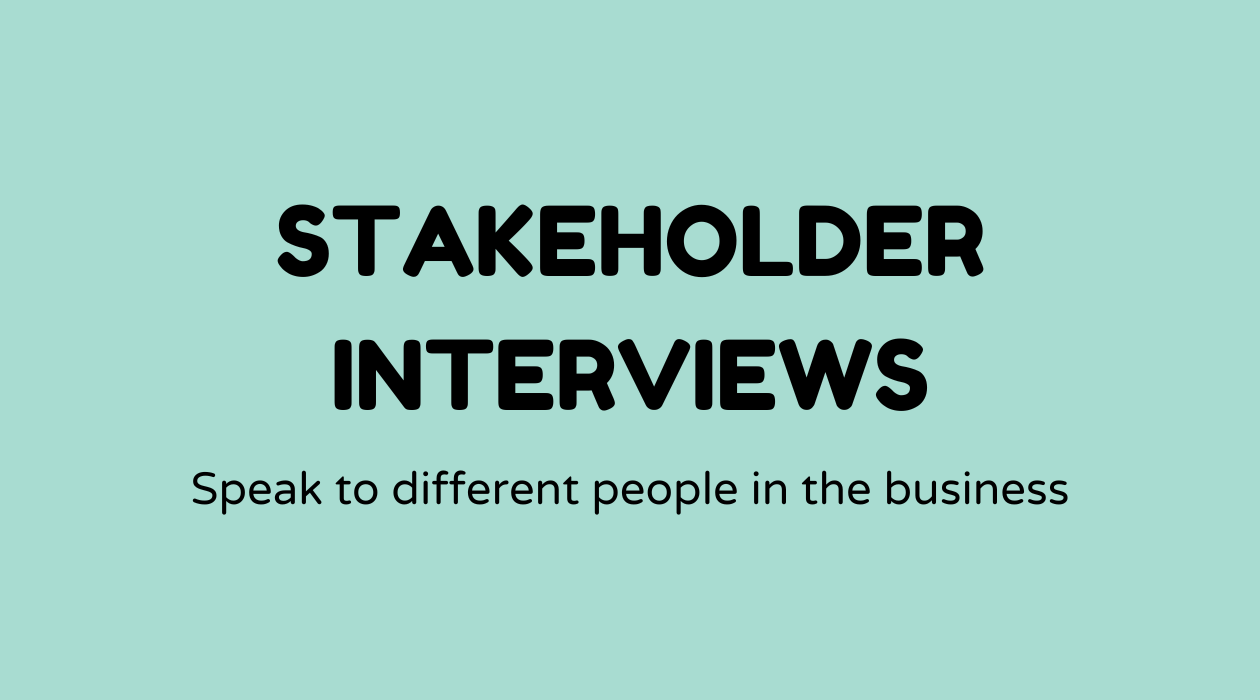Stakeholder interviews

Overview of Stakeholder Interviews
When entering the realm of stakeholder interviews, it is essential to recognize their importance in contributing to a project's success. These interviews serve as foundational elements for gathering insightful information from individuals invested in the project's results. Engaging your stakeholders effectively can yield a diverse array of feedback, addressing both project objectives and stakeholder interests.
The real value of stakeholder interviews lies in the conversations aimed at understanding various viewpoints and expectations. It’s all about effective communication! Stakeholders can include clients, team members, end-users, and sponsors who provide unique insights into project demands. This engagement equips you with the knowledge needed to align the project journey with its intended goals.
Why Stakeholder Interviews Matter
So, why engage in these interviews? Conducting stakeholder interviews leads to a clearer comprehension of project requirements and highlights potential challenges. These discussions facilitate the identification of hidden threats and allow for proactive problem-solving. This process can refine your project's direction, minimize misunderstandings, and ensure participants share a unified understanding.
Involving stakeholders from the beginning can enhance buy-in and nurture commitment. When stakeholders feel acknowledged, they are more inclined to align their support with project targets. Furthermore, their feedback influences key decisions, resulting in a strong foundation for successful project execution.
What are Stakeholder Interviews?
At its essence, a stakeholder interview is a focused discussion aimed at gathering vital information from stakeholders. These structured conversations are tailored to investigate what stakeholders wish, need, and expect from the project. Whether developing a new product or implementing organizational changes, these interviews are crucial in charting a clear course ahead.
These dialogues can be structured yet adaptable, fitting the project’s specific context and needs. They cover a variety of topics, including goals, perceived challenges, desired outcomes, and personal expectations. Interacting with stakeholders in this manner ensures that every element of the project plan is informed by those with a vested interest.
How to Conduct Stakeholder Interviews
Successfully executing stakeholder interviews involves several essential steps:
Define Objectives: Decide what information you want to gather from the interviews. A clear purpose establishes a strong foundation.
Identify Stakeholders: Select which stakeholders will provide the most valuable insights.
Prepare Questions: Create open-ended questions that promote detailed responses.
Set Context: Start each interview with an overview of the project's background and objectives.
Create a Comfortable Setting: Build rapport by fostering an open and trusting environment.
Record and Analyze: Accurately document responses and analyze them with qualitative methods to derive conclusions.
Sample Agenda for Stakeholder Interviews
To ensure productive dialogues during stakeholder interviews, consider this agenda template:
- Introduction & Purpose: Brief stakeholders about the project.
- Ice-breaking Discussion: Start with light questions to ease into the conversation.
- Explore Stakeholder Goals: Discuss their expectations.
- Discuss Challenges and Concerns: Invite honest feedback on potential issues.
- Identify Opportunities: Encourage brainstorming on possible enhancements.
- Wrap-Up & Next Steps: Summarize key takeaways and outline future actions.
Following a structured agenda helps keep interviews focused and respectful of both your time and the stakeholders'.
Examples of Stakeholder Interviews
Real-life examples enhance the appreciation of stakeholder interviews:
Example 1: In a software development project, insights from stakeholders led to the inclusion of an innovative feature that improved user experience and raised retention rates by 20%.
Example 2: During a city's public planning endeavor, stakeholder interviews revealed significant environmental concerns that guided sustainable adjustments to the project.
These instances highlight the meaningful contributions stakeholder input can provide when gathered effectively.
FAQs
Why should you conduct stakeholder interviews early in a project?
Engaging in interviews at the start helps clarify project goals, reduce uncertainties, and stimulate stakeholder support from the onset.
What type of questions should you ask in stakeholder interviews?
Utilize open-ended questions that delve into stakeholders' objectives, challenges, and desired outcomes to foster comprehensive discussions.
How long should a stakeholder interview last?
Ideally, a stakeholder interview should be brief yet thorough, typically lasting between 30 to 60 minutes, allowing adequate time to address essential topics without overwhelming participants.
How do you handle conflicting feedback received from stakeholders?
Aim to find a balance by prioritizing feedback that aligns with project objectives and facilitating ongoing discussions to achieve consensus.
Can technology assist in conducting effective stakeholder interviews?
Absolutely, using tools like Zoom or Microsoft Teams can facilitate remote interviews, promoting broader participation and more accessible documentation.
How does stakeholder involvement impact project success?
Active stakeholders offer valuable insights and support that can greatly enhance project strategies, alignment, and favorable outcomes.



